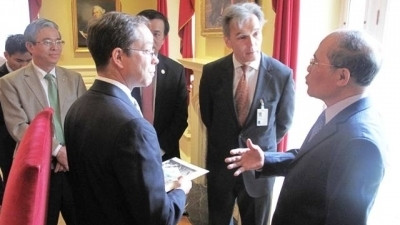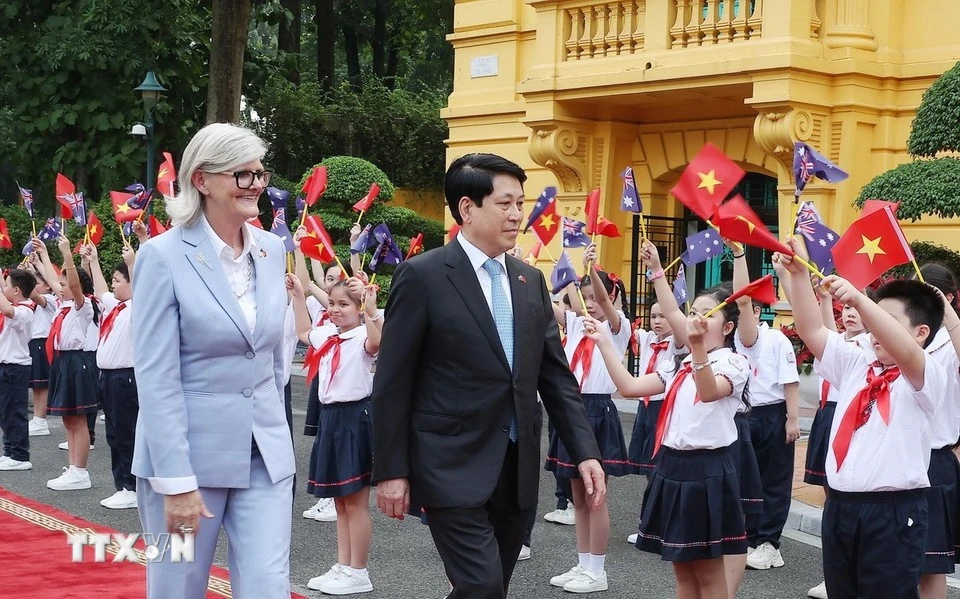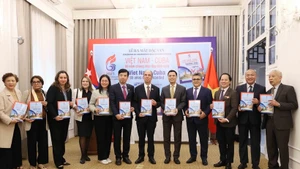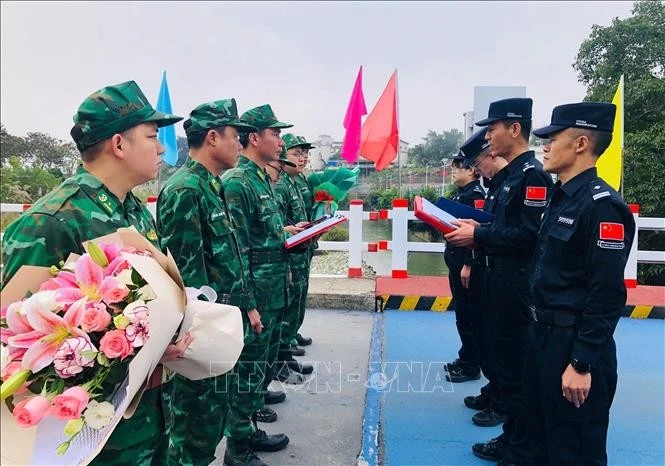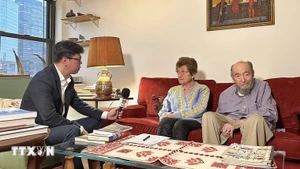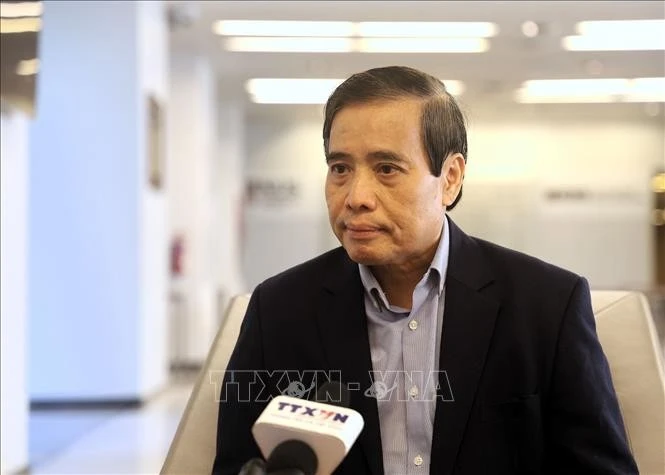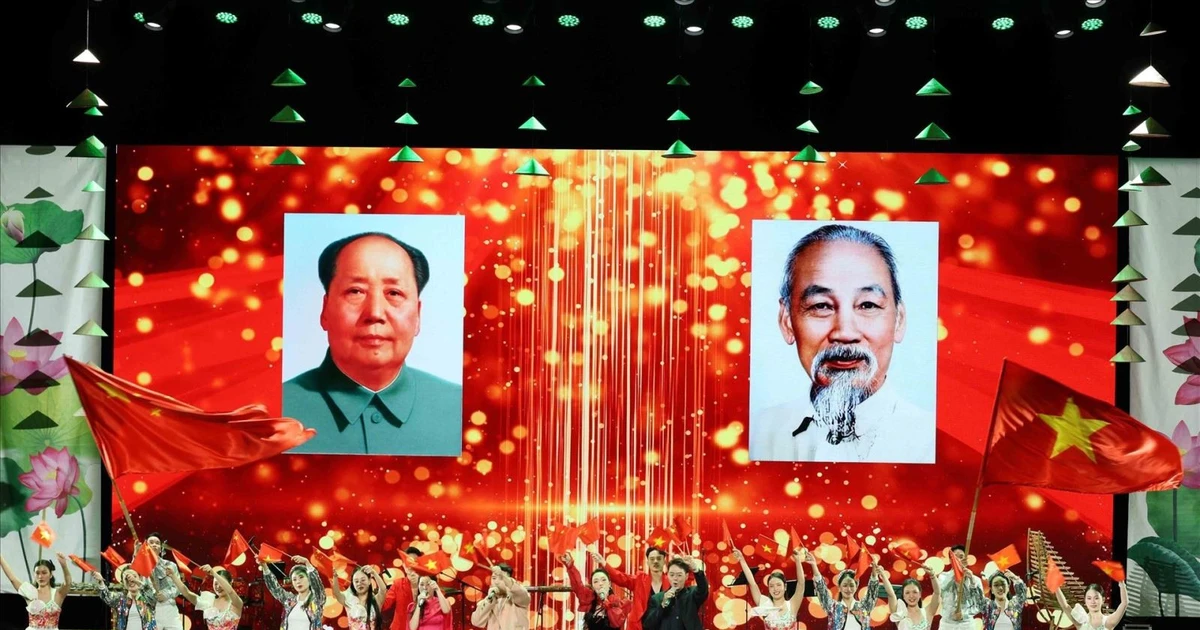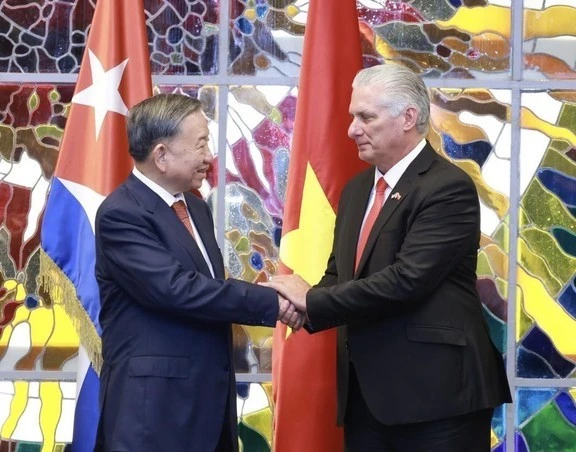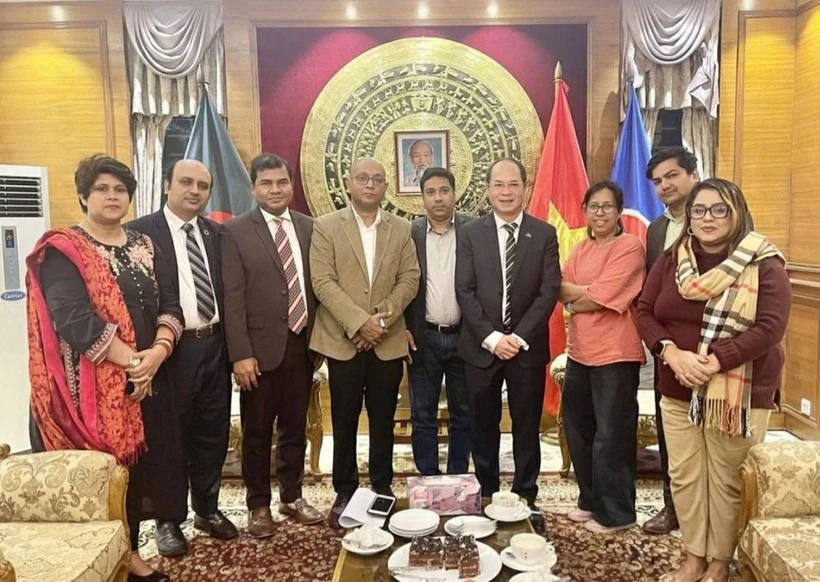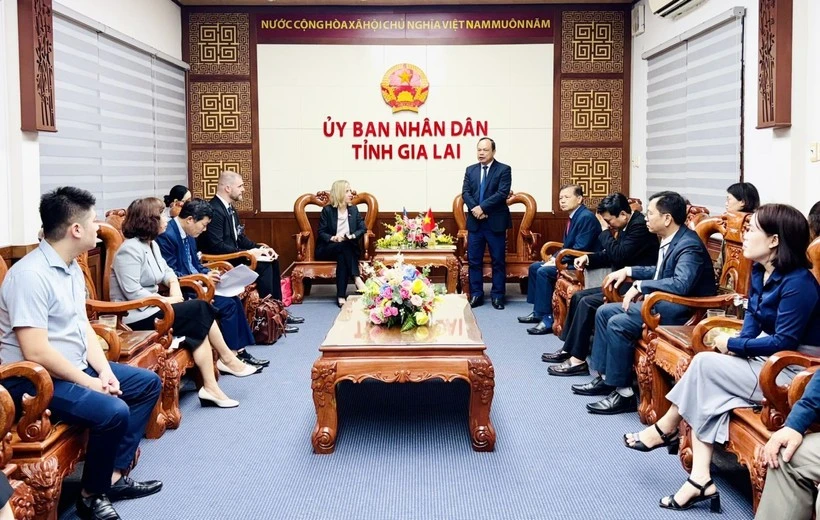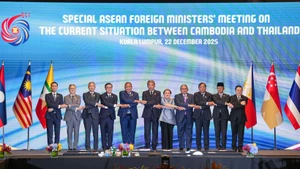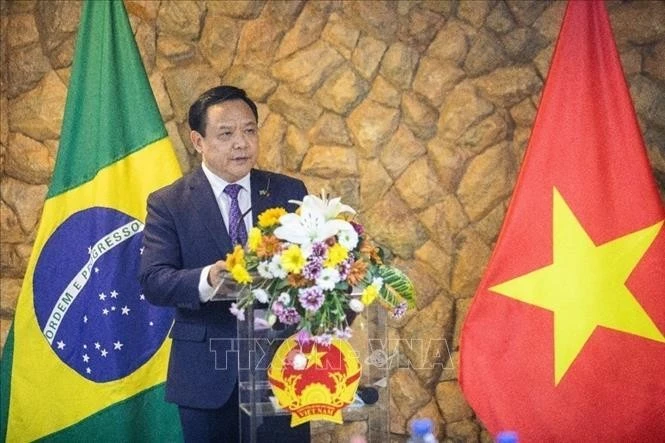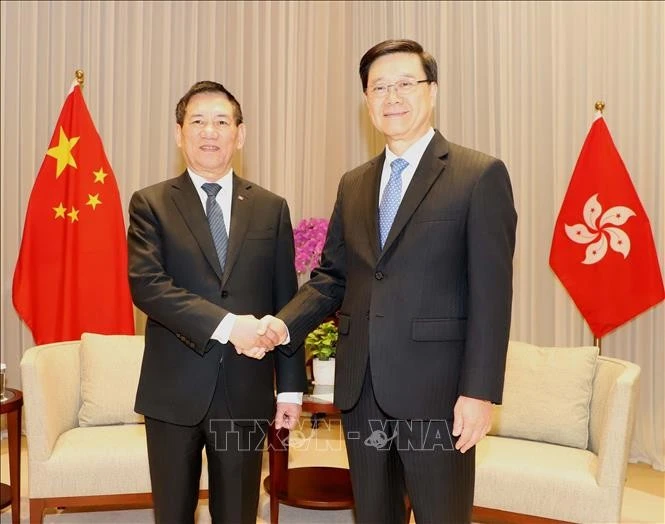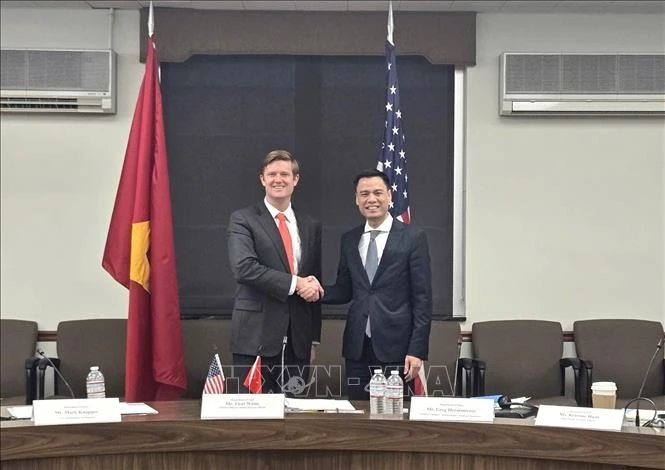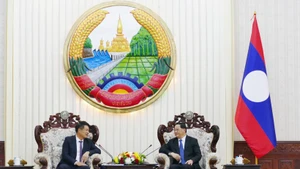>> Omni Parker Hotel and accounts of Uncle Ho
>> Special meeting with the first US artist to paint Uncle Ho’s portrait
Kevin Bowen, a US poet and former director of William Joiner Centre under the University of Massachsetts (now the William Joiner Institute), talked to participants at the meeting between the high-level delegation of the Vietnam National Assembly with representatives from the overseas Vietnamese community in Boston at the Omni Parker Hotel as if he had been their relatives.
The war veteran, who was in the Tay Ninh front in Vietnam in the American war, made a presentation on his studies about Uncle Ho’s life and activities during his stay in Boston on seeking a way to save his nation.
Figures with the Parker House
Kevin said that Van Ba (President Ho Chi Minh’s name at that time) got on board from Le Havre Port of France to New York as a sailor and after a short stay in New York, he moved to Boston, lived and worked there during the city’s most vibrant period.
Many documents said that Van Ba worked for a rich family in Brooklyn before becoming a baker for the Parker House in Boston. His time in Boston was considered as a golden age of American Literature. The Parker House was built in 1855 and becaome a regular venue for of outstanding writers, including Emerson, Thoreau, Hawthorne and Longfellow.
Records at the Parker House noted that such national and local politicians as Ulysses S. Grant, James Michael Curley, Franklin Delano Roosevelt, John F. Kennedy, Colin Powell, Thomas “Tip” O’Neill, William Jefferson Clinton and Deval Patrick, joined discussions and or press conferences held at the hotel. As the hotel was closed to Boston’s theatre, many famous artists in the 19th century, including Charlotte Cushman, Sarah Bernhardt, Edwin Booth, John Wilkes Booth’s brother considered it as their home.
Kevin Bowen said that the time Van Ba was in Boston in 1912 was transitional period and he met with persons who made those changes.
Van Ba and Boston Cream Pies
Kevin respectfully addressed Van Ba as ‘the most famous baker in the history’ and stated that the Parker House, which was known for long as a destination of writers, artists, politicians and famous actors, was where President Ho Chi Minh lived and worked.
On a small marble table, the baker contributed to the hotel’s reputation through making Boston Cream and Lemon Meringue Pies, which has become special desserts at banquets of Massachusetts granted to distinguished local and international guests.
Kevin showed photos in which Van Ba, among local residents and new immigrants, was in the Boston Public Library to get updated about the world, write articles at his accommodation, connect with Phan Chu Trinh, his family and authorities in Hue and try to send money home like many other immigrants.
Van Ba mainly lived in South Cove or South End, not far from Boston Common, where new immigrants could be found and headquarters of the first advanced social organisations of Boston were based.
Kevin said that during his stay in Boston, Van Ba must have witnessed the construction of buildings and complex, which now become historic facilities, including Franklin Park Zoo, Children’s Museum, Liberty Mutual Building, Fanway Park, Boston Fish Pier, The Boston Young Men's Christian Union, Customs House Clock Tower and Part Street Station.
“Bread and Roses”
Kevin said that during Van Ba’s stay in Boston, marches and demonstration for better living and working conditions became part of daily dialogues’ themes.
Van Ba lived among activists for women’s rights, from the Suffragettes movement fighting for the right for women to vote to trade unions’ struggle for better working conditions for women in factories.
When Massachusetts adopted the first bill on a 54-hour work week policy, plants’ owners responded by cutting workers’ wages. In Lawrence, female workers and labour unions launched a movement, which was later known worldwide as the strike of ‘Bread and Roses’. Kevin said that Van Ba must have listened to speeches by Big Bill Haywood and joined demonstrations together with supporters to the movement.
In June 1912, thousands of workers joined a strike protesting their employer’s arbitrary treatment and prevention against the trade union movement. Over 700 workers were was arrested and the strike ended after Mayou John J.Fitzgerald, ‘Honey Fitz’, got involved. Afterwards, thus the trade union was recognised and a public service committee was established to protect workers’ interests.
Kevin said that Van Ba must have witnessed discussions between lobbyists and politicians at the Parker House and made birthday cakes for Honey Fitz, whose daughter later became of the mother of a state leader like Van Ba in the 20th century, John F. Kennedy.
Kevin also recalled historic events in sports, business, military and jazz music while invoking specifically situation in the US, the region and the world in 1912 when Van Ba was in Boston to reaffirm the significance of the young Vietnamese man’s presence in the city on his way to save the nation.
| Kevin Bowen, with an artist’s heart experiencing the war, returned to Vietnam for times to heal the war’s wounds and boost the reconciliation process through cultural, literary and artistic channels. He has drawn 34 oil paintings of portraits of Vietnamese writers, poets and artists, who are his close friends. After returning from the American War in 1969, Kevin Bowen joined the anti-war movement of US war veterans. As a studentand during his student time, he took a part-time job as a greengrocer to save money for a trip to France to wait for the Paris Peace Conference’s results. Kevin’s most impressive poem collection is “Playing Basketball with the Viet Cong”, in which the poem with the same title was presented to writer Nguyen Quang Sang when he visited the US and played basketball with Kevin in his home’s yard in Boston. He initiated a programme to bring Vietnamese writers to the US to talk about their country and sook ways to introduce Vietnamese literature in the US. He named a poem collection, which was translated from Vietnamese to English, composed by poets during the American war ‘Song nui’ because he wanted to reiterate Vietnamese people’s freedom and rights to independence, and their spirit in protecting the rights as mentioned in a poem by Ly Thuong Kiet, which was considered as the first Independence Declaration of the Vietnamese nation. |
